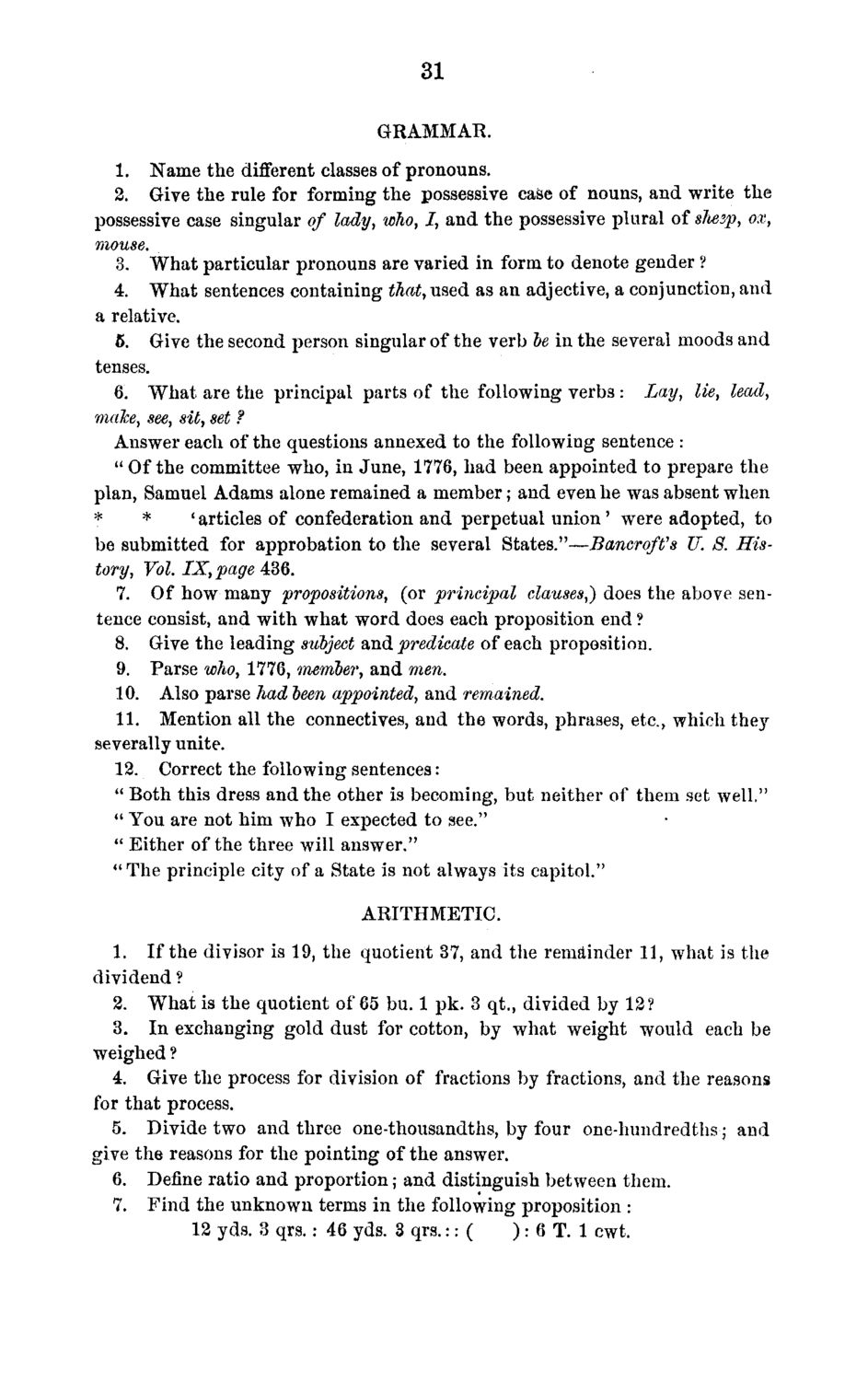| |
| |
Caption: Board of Trustees Minutes - 1870
This is a reduced-resolution page image for fast online browsing.

EXTRACTED TEXT FROM PAGE:
31 GRAMMAR. 1. Name the different classes of pronouns. 2. Give the rule for forming the possessive case of nouns, and write the possessive case singular of lady, who, I, and the possessive plural of shesp, ox, mouse. 3. W h a t particular pronouns are varied in form to denote gender ? 4. W h a t sentences containing that, used as an adjective, a conjunction, and a relative. 5. Give the second person singular of the verb be in the several moods and tenses. 6. W h a t are the principal parts of the following verbs : Lay, lie, lead, make, see, sit, set f Answer each of the questions annexed to the following sentence : " Of the committee who, in June, 1776, had been appointed to prepare the plan, Samuel Adams alone remained a member; and even he was absent when * * ' articles of confederation and perpetual u n i o n ' were adopted, to be submitted for approbation to the several States."—Bancroft's TJ. S. History, Vol. IX, page 436. 7. Of how many propositions, (or principal clauses,) does the above sentence consist, and with what word does each proposition end ? 8. Give the leading subject and predicate of each proposition. 9. Parse who, 1776, member, and men. 10. Also parse had been appointed, and remained. 11. Mention all the connectives, and the words, phrases, etc., which they severally unite. 12. Correct the following sentences: " Both this dress and the other is becoming, but neither of them set well." " You are not him who I expected to see." " Either of the three will answer." " T h e principle city of a State is not always its capitol." ARITHMETIC. 1. If the divisor is 19, the quotient 37, and the remainder 11, what is the dividend ? 2. W h a t is the quotient of 65 bu. 1 p k . 3 qt., divided by 12? 3. In exchanging gold dust for cotton, by what weight would each be weighed ? 4. Give the process for division of fractions by fractions, and the reasons for that process. 5. Divide two and three one-thousandths, by four one-hundredths•; and give the reasons for the pointing of the answer. 6. Define ratio and proportion; and distinguish between them. 7. F i n d the unknown terms in the following proposition : 12 yds. 3 q r s . : 46 yds. 3 q r s . : : ( ) : 6 T. 1 cwt.
| |